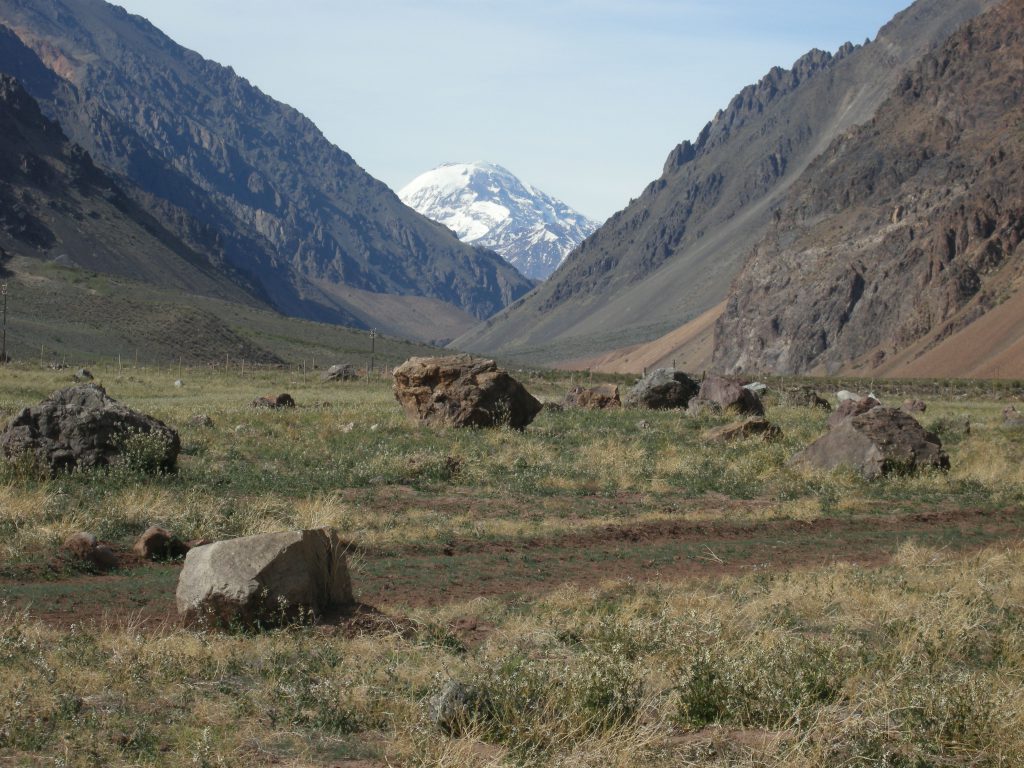 The Andes Mountain Range, or Cordillera de los Andes, stretches as a formidable 4,500-mile (7,242km) north-south barrier along the western margin of South America. The tallest peak, Mount Aconcagua (at 22,841 ft./6,962m), rises on the border between Chile and Argentina, in the province of Mendoza, Argentina, and at the latitude of the capital city of Chile, Santiago. The mountain range supplies critical water resources on both sides, however, the countries share no transboundary glaciers or surface watercourses, as the border between the countries follows the spine of the mountains. Chile and Argentina do share an uncertain hydrologic future as escalating water demands for agriculture, mining, and urbanisation stress available supplies, and global change alters weather patterns and precipitation regimes on both sides of the mountains.
The Andes Mountain Range, or Cordillera de los Andes, stretches as a formidable 4,500-mile (7,242km) north-south barrier along the western margin of South America. The tallest peak, Mount Aconcagua (at 22,841 ft./6,962m), rises on the border between Chile and Argentina, in the province of Mendoza, Argentina, and at the latitude of the capital city of Chile, Santiago. The mountain range supplies critical water resources on both sides, however, the countries share no transboundary glaciers or surface watercourses, as the border between the countries follows the spine of the mountains. Chile and Argentina do share an uncertain hydrologic future as escalating water demands for agriculture, mining, and urbanisation stress available supplies, and global change alters weather patterns and precipitation regimes on both sides of the mountains.
The central Andean region of Mendoza, Argentina, along with the region of Rio Maipo/Santiago, Chile, have been selected for study in the project entitled ‘Transboundary water security in the arid Americas’, supported by the International Water Security Network (IWSN) and the Lloyd’s Register Foundation, and managed by the Udall Center for Studies in Public Policy at the University of Arizona.
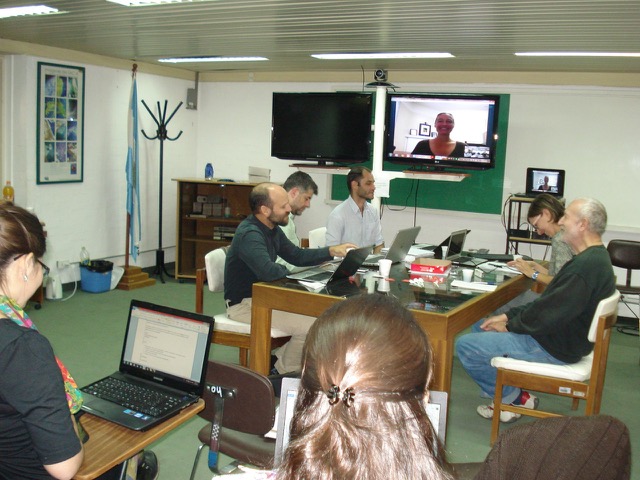 On 11 May 2015, teams of researchers from the National Council of Scientific and Technological Investigation (Consejo Nacional de Investigaciones Científicas y Technológicas; CONICET) in Mendoza, Argentina, and The Center for Global Change (Centro de Cambio Global) at the Pontificia Universidad Católica of Chile (PUCC) met at the CONICET campus in Mendoza. IWSN postdoctoral research associate Rafael de Grenade from the Udall Center for Studies in Public Policy facilitated the meeting via Skype.
On 11 May 2015, teams of researchers from the National Council of Scientific and Technological Investigation (Consejo Nacional de Investigaciones Científicas y Technológicas; CONICET) in Mendoza, Argentina, and The Center for Global Change (Centro de Cambio Global) at the Pontificia Universidad Católica of Chile (PUCC) met at the CONICET campus in Mendoza. IWSN postdoctoral research associate Rafael de Grenade from the Udall Center for Studies in Public Policy facilitated the meeting via Skype.
The primary purpose of the meeting was to define key issues faced by scientists, policymakers, and stakeholders on both sides of the central Andes as the foundation for collaborative International Water Security Network research. The priorities of water security, adaptation, and resource management guided discussion throughout the day.
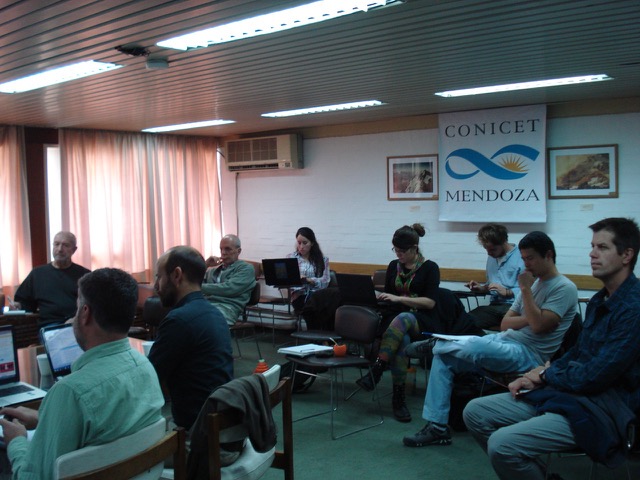 The participants included CONICET social scientists Paula Mussetta and Facundo Martin who have studied farmer adaptation to climate change in several Andean river basins in the Mendoza region. Also joining the discussion were four scientists from IANIGLA (Instituto Argentino de Nivología, Glaciología y Ciencias Ambientales, the Argentinean Institute for the Studies of Snow, Glaciers and Environmental Sciences), Jose Boninsegna, Ricardo Villalba, Facundo Rojas and Mariano Masiokas. From PUCC in Chile, Francisco Meza, an applied hydroclimatologist with experience in the use of remote sensing and geographic information science for climate change, adaptive capacity, and water and environmental assessment; and Sebastian Vicuña, a hydrologist and political scientist with expertise in vulnerability, adaptation, and science-policy dialogues for water-resources management, flew across the mountains to be present at the discussion. Six graduate students also participated: María Marta Bernabeu, Nicolás Parise, Robin Larsimont, Julia Barrientos, Anabella Engelman, and Óscar Carballo.
The participants included CONICET social scientists Paula Mussetta and Facundo Martin who have studied farmer adaptation to climate change in several Andean river basins in the Mendoza region. Also joining the discussion were four scientists from IANIGLA (Instituto Argentino de Nivología, Glaciología y Ciencias Ambientales, the Argentinean Institute for the Studies of Snow, Glaciers and Environmental Sciences), Jose Boninsegna, Ricardo Villalba, Facundo Rojas and Mariano Masiokas. From PUCC in Chile, Francisco Meza, an applied hydroclimatologist with experience in the use of remote sensing and geographic information science for climate change, adaptive capacity, and water and environmental assessment; and Sebastian Vicuña, a hydrologist and political scientist with expertise in vulnerability, adaptation, and science-policy dialogues for water-resources management, flew across the mountains to be present at the discussion. Six graduate students also participated: María Marta Bernabeu, Nicolás Parise, Robin Larsimont, Julia Barrientos, Anabella Engelman, and Óscar Carballo.
Scientists first defined major similarities and differences in the study areas, such as climate and hydrological regimes, cultures, and governance modes. Variability is increasing in both regions, including the amount and timing of rainfall, which has generated challenges in handling both the excess and scarcity of water. Because of this growing unpredictability, information as a resource to manage climate variability may be the key to adapting to climate changes in the future. As an example, irrigation infrastructure in the Mendoza agriculture region on the Argentine side is designed to utilise snowmelt coming off the primary Andean basins. However, in the last two years rainfall has increased, and the system is not designed to harvest and incorporate these additional water resources. Similarly, in Chile summer rainfall is increasing, and farmers are not able to effectively capture and utilise the water. Efficient water-resources management implies changes in infrastructure as well as in the mentality of the users.
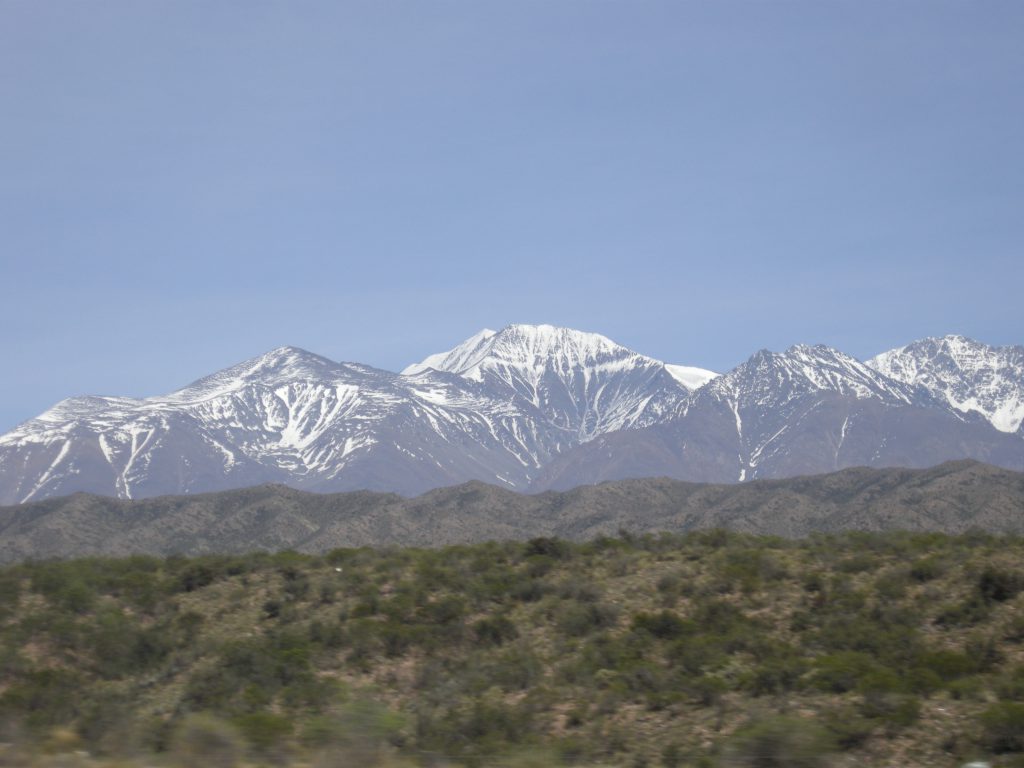 In the first brainstorming session, proposed challenges included: How to develop infrastructure to capture and store this highly variable precipitation? And even if good science could characterise the dynamic nature of the resource, how to manage the policies and regulation, including both surface and groundwater?
In the first brainstorming session, proposed challenges included: How to develop infrastructure to capture and store this highly variable precipitation? And even if good science could characterise the dynamic nature of the resource, how to manage the policies and regulation, including both surface and groundwater?
The teams identified water-resources management, governing institutions, and public policy as critical components of water security in the regions. They identified one of the research gaps as the lack of suitable, usable information available to policymakers and stakeholders. Scientists must be prepared both to generate new information, and also to translate it for public use.
The teams collectively agreed that the first step in designing effective research strategies would be to develop a systematic characterisation of the basins on both sides of the central Andes. This would facilitate an information gap analysis, as well as provide an opportunity to analyse the information and communication disparities among scientific disciplines and between the two countries. Case studies of successful and unsuccessful projects and policies could be evaluated in both countries and adapted for implementation in future transboundary science-policy initiatives.
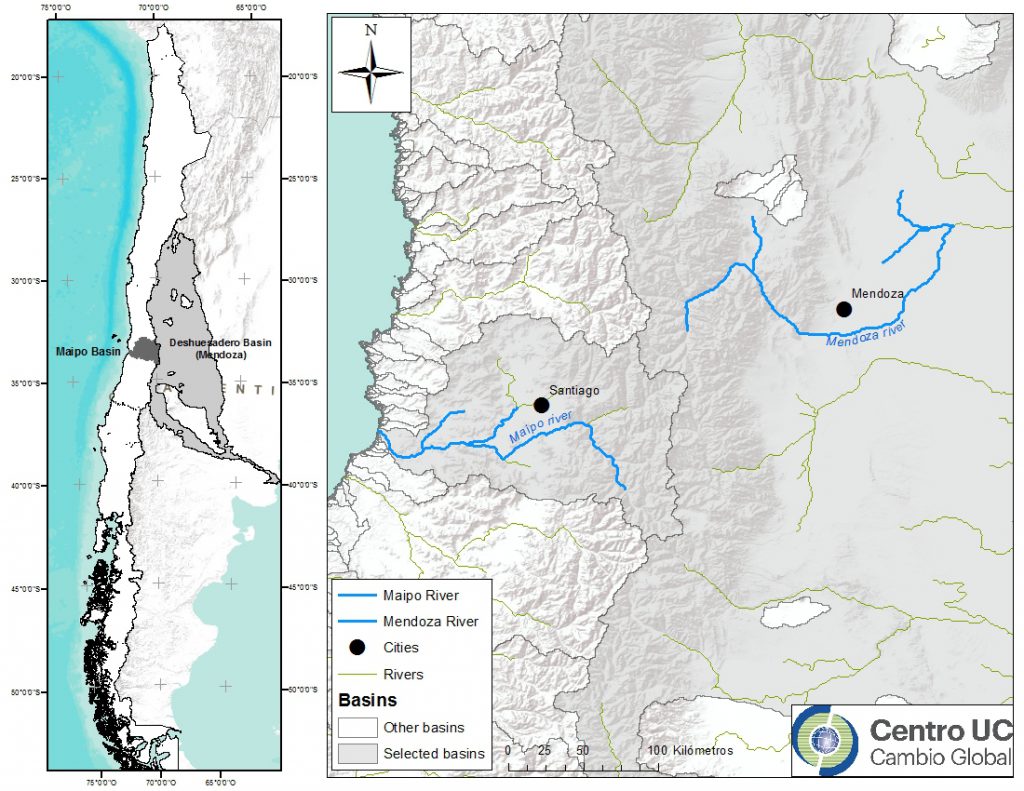 For the first year of this transnational aspect of the collaborative IWSN research, the CONICET and PUCC teams proposed a research plan of systematically assessing the state of water-resource knowledge, and the production and utilisation of hydroclimatic information across temporal and geographic scales. They will chart similarities in and differences between the two regions and identify key actors engaged in water resource management and climate adaptation. The attendees proposed to analyse the transparency in management and communication of information, as well as information diffusion and sharing.
For the first year of this transnational aspect of the collaborative IWSN research, the CONICET and PUCC teams proposed a research plan of systematically assessing the state of water-resource knowledge, and the production and utilisation of hydroclimatic information across temporal and geographic scales. They will chart similarities in and differences between the two regions and identify key actors engaged in water resource management and climate adaptation. The attendees proposed to analyse the transparency in management and communication of information, as well as information diffusion and sharing.
During the second year, the teams will choose one or two specific case studies in which to engage stakeholders and policymakers on both sides of the Andes in resource security and adaptation discussions.
During this workshop, these investigators brought together their diverse experiences, expertise, and perspectives to explore directions in innovative water-security research. The binational team will characterise transboundary water resources and compare governance, adaptive strategies, science-policy dialogue processes, and water-security solutions on both sides of the central Andes mountain range.
Stay tuned for future research advances from the arid Americas.
